In April 2021, I visited Pucallpa in the Amazon region of Peru. The city of 300,000 sits on the hot and humid banks of the Ucayali River, the headwater of the mighty Amazon to the north. I came with my partner and bandmate, Sonia, in search of pink dolphins, camu camu berries and starlit boat rides. But something else also drew us here.
Ayahuasca is a brew made from heating and mixing different plants together. It comes in many recipes, but perhaps the best known includes the Banisteriopsis caapi vine and leaves of Psychotria viridis (“chacruna”). The combination creates a psychedelic substance with the active ingredient DMT—a powerful hallucinogen and entheogen.
Ayahuasca’s physical side effects may include vomiting, diarrhea or body-temperature changes. Its psychological effects include experiences described as “visionary” or dream-like. Research is showing that ayahuasca may be beneficial for a range of mental health conditions, including depression, suicidality, substance use disorder and trauma.
While researchers still debate the specifics, ayahuasca is a part of dozens of Indigenous cultures throughout South America, particularly the Amazon region, with a history going back hundreds or even thousands of years. The most prominent tribe in Pucallpa is the Shipibo-Conibo.
One consequence is that ayahuasca has become a global commodity.
Ayahuasca has experienced unprecedented popularity in the US and Europe since roughly the 1990s, drawing many tourists to the region, including to Iquitos, the largest city in the Peruvian Amazon.
“Alan Shoemaker, an American who visited Iquitos in the 90s, organized one of the first shaman’s tours in the US, trained as a curandero [healer], and now runs a center near Iquitos, says that local police tell him ‘they believe that on any given Friday night 10 percent of the population is in a ceremony,’” wrote Mark Hay for JSTOR Daily.
One consequence is that ayahuasca has become a global commodity—an 11-day ayahuasca retreat at the Temple of the Way of Light in Iquitos, for example, costs $3,300. Hay’s article explains some of ayahuasca tourism’s negative impacts on local and Indigenous communities, such as by inflating prices for the drink, and by enriching foreigners who may employ locals but underpay them.
“Now that there’s a lot of international interest, there’s a lot of Shipibo people with financial need, so they’ll take an interest in the opportunity to work for dollars or euros, which will go a long ways for them to take care of their own families,” Joe Tafur, MD told Filter. Tafur spent many years studying and working with a Shipibo ayahuasca center in Iquitos, and wrote about his experiences in his book The Fellowship of the River.
“Within that there’s people who will do it right and well and honor their tradition and do it with the highest integrity,” he said, “and there will be people who don’t, who maybe are just trying to make money or take advantage of tourists, who maybe don’t take it too seriously, either.”
Ayahuasca is also increasingly taking root in the US, with practitioners offering ceremonies—openly and underground—mixing Indigenous traditions with Western psychotherapy and clinical approaches. But ayahuasca—specifically, DMT—is a Schedule I substance, illegal under federal law. That’s increasingly put ayahuasca in conflict with law enforcement, even as some major cities move to decriminalize these naturally occurring psychedelics. The Supreme Court in 2006 and an Oregon federal District Court in 2009 both ruled those ayahuasca churches and their use of the drug was protected by religious freedom law.
Ayahuasca practices across South America and beyond are as diverse as the cultures that foster them.
But those rulings don’t offer a blanket right to any ayahuasca organizations. Tafur himself founded an ayahuasca church in Arizona, and is now party to a lawsuit against federal agencies that allegedly seized shipments of the brew and threatened the church.
Ayahuasca practices across South America and beyond are as diverse as the cultures that foster them.
“You have every range of types of approaches,” Ismail Ali, director of policy and advocacy for MAPS, told Filter. “Some groups are really joyful and singing and dancing and it’s a collective celebratory experience. Sometimes it’s really somber, totally pitch-black, just praying and bearing it out and not pleasant or fun, more in the deep healing work zone.”
Ali has provided legal support to ayahuasca communities, and has personal experience of ceremonies in the Amazon region. He stresses that anyone interested in trying it should be mindful of who is leading a ceremony.
“I think a lot of people think just because they have experience with it, they can start serving it or become shamans themselves,” he said. “If so, they should do so in the way it’s been held, which is through a lineage of teaching. Usually people are practicing for a full decade before they’re even permitted to sit in front of the room, much less serve someone.”
A Trip Up the River
Sonia and I stayed in Pucallpa for about six weeks. During that time, we twice tried and failed to do ayahuasca. The first time, we were left stranded with our guide at a housing center with no transportation to the ceremony. The second time, one of our homestay hosts, Sergio, told us he knew a talented shaman, and arranged for him to pick us up the next evening.
But our friend Gloria*, who lives in Pucallpa and works with Indigenous groups, wasn’t impressed. “Who is this guy?” she asked. “What is his experience? Has he told you anything about what he’s getting you into? No advice, no dietary guidelines? He hasn’t even asked about your medical history?”
According to the International Center for Ethnobotanical Education, Research and Service, ayahuasca is not recommended for people with a range of conditions, including cardiovascular and psychiatric illnesses, as well as those on certain medications such as antidepressants and psychotropics.
“He’s clearly not taking your safety or his seriously,” Gloria said. “And that’s not someone I would want to drink with. There’s a lot of people practicing ayahuasca with bad spiritual energy. They’re practicing bad medicine.”
Gloria was referring to practices specific to Shipibo plant medicine, which may include years of training, meditating, studying with elders and “dieting.” Dieting is a form of abstinence and spiritual “cleansing,” and may mean not eating meat, salt or fat, not consuming any drugs, and even not having sex.
We traveled up the river for two hours, the forest all around us, until we arrived in Douglas’s village, Nueva Betania.
But this is just one ayahuasca tradition among many. For people participating in these ceremonies, it’s important to understand the specific traditions your shamans or guides are following.
In this context, “even though the brew itself, and even some of the ritual practices surrounding it, may have similar raw effects on anyone, they will likely generate very different overall experiences—different risks and benefits—for outsiders than for insiders,” wrote Hay.
So we called things off with Sergio. But we decided to stay in Pucallpa long enough to take a river trip into the forest. Up to that point we had barely left the dusty city. Gloria connected us with a man named Douglas, who was a shaman, she told us.
Douglas asked us to meet him Monday morning at the port. For 300 nuevo soles (about $80), he promised us a ride to his village, accessible only by water, with an overnight stay and meals.
Crammed in a boat with about 60 others and very loud music, we traveled up the river for two hours, the forest all around us, until we arrived in Douglas’s village, Nueva Betania.
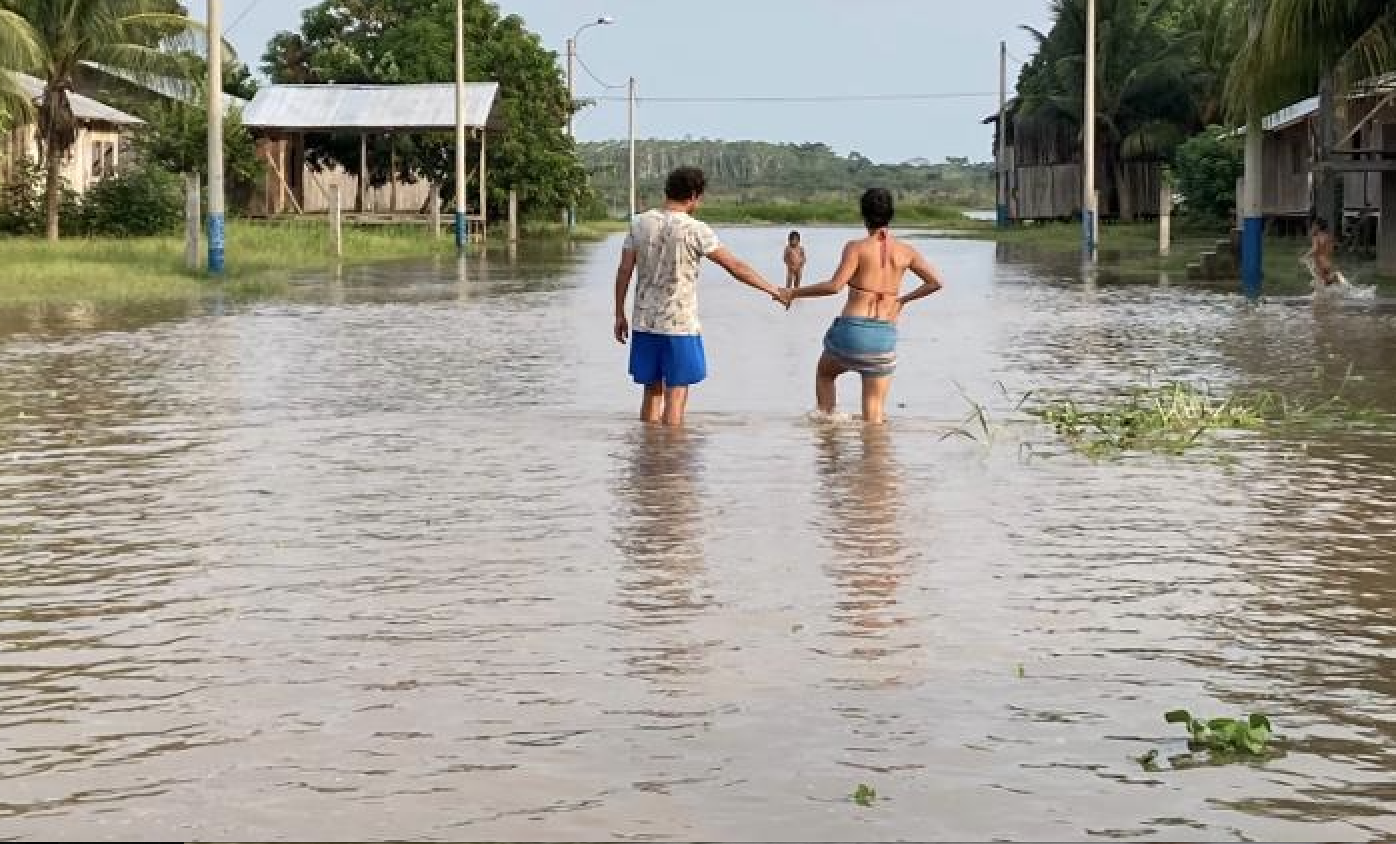
We walked to the home of his aunt, Tia Flora, and met some of his extended family. Lunch included a salad we made, plus rice, plantains and a grilled meat totally new to us—armadillo! Several houses down the road I met Douglas’s uncle, Tio Elias. He told me the village was home to about 600 people. Many grow their own crops and raise livestock. Others visit the city to sell goods, and students go there for higher education.
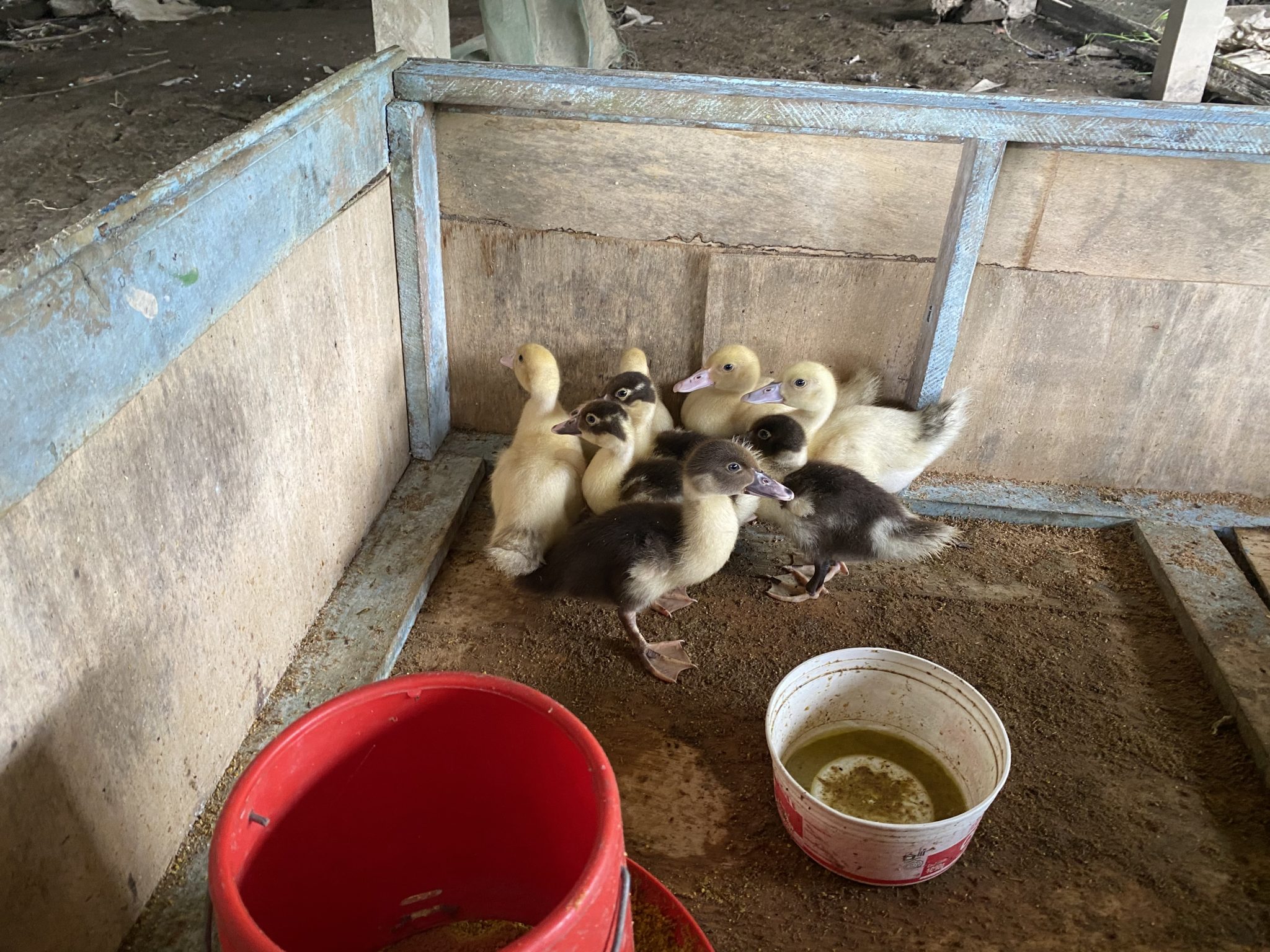
Many of the people live in houses built on stilts to protect from floods, he explained. When water levels rise, they navigate between homes in small canoes. They have electricity, clean drinking water from a tank supply, and a local elected government. The primary school teaches children in both the Shipibo language and Spanish.
But there’s no sugarcoating the relative poverty here, compared with the city. Douglas later told me, in an interview published separately by Filter, that Indigenous river communities are systematically neglected and deprived by the state government—forcing residents to rely on their own ingenuity to survive. If you’re interested to connect with Douglas and his family and learn more about their work, you can visit their Facebook page.
The Ceremony
Later, Sonia came and found me in our room. To my surprise and excitement, she informed me we would be doing ayahuasca that night—which sadly meant there was no dinner!
I learned afterwards that no one offered us ayahuasca initially. After talking to Tia Flora for hours, Sonia felt safe enough to ask. Tia Flora told her to ask Douglas.
Sonia shared the powerful conversation she had with Tia Flora, about how she’d created a program for poor Indigenous students to go to Lima. Most people didn’t believe in her—she was even laughed at, she said, by former President Fujimori’s wife. But many of her students went on to lead great careers. (Fujimori’s career ended with convictions for human rights abuses and corruption.)
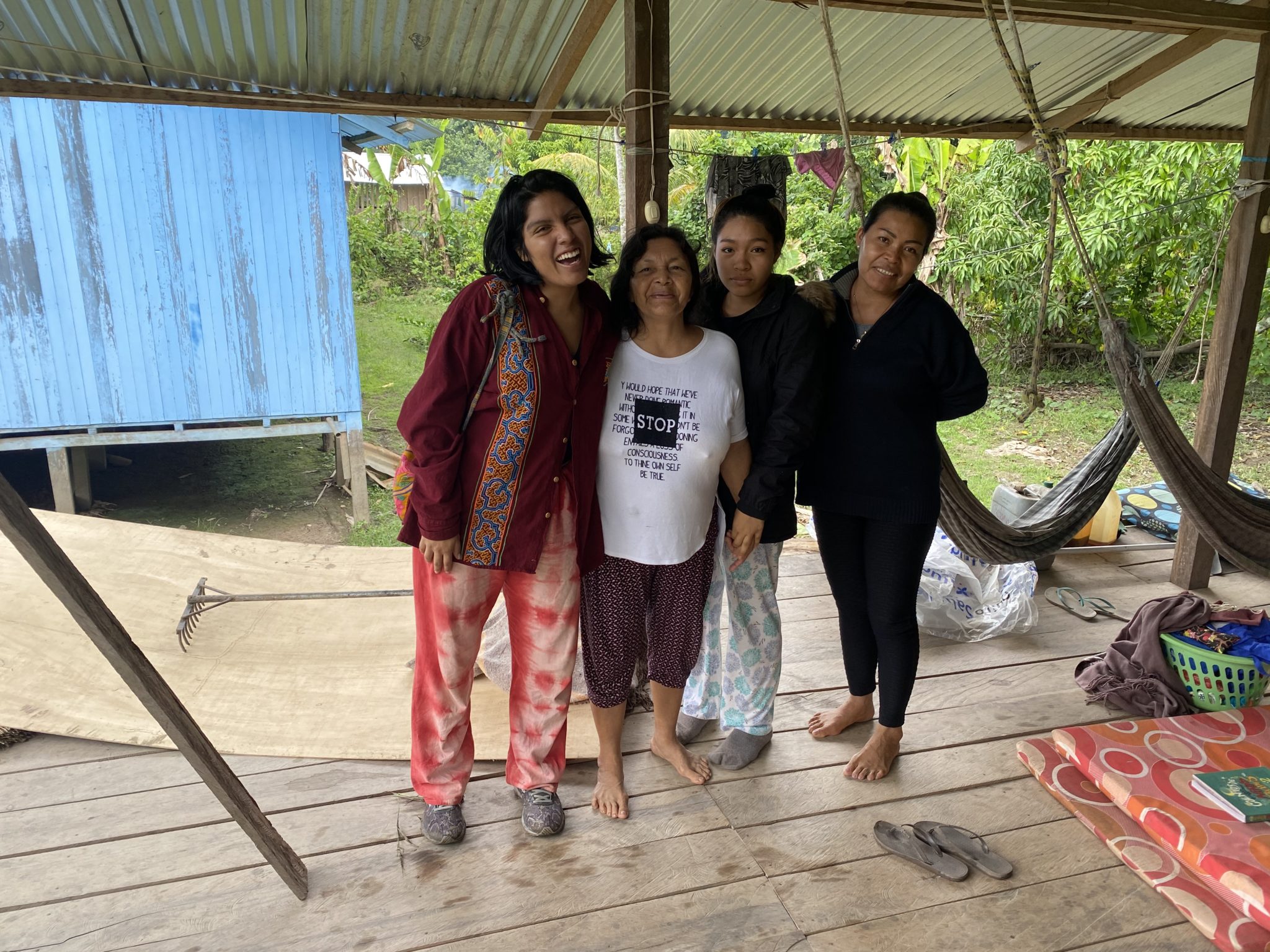
Sonia with Tia Flora and other family members
Douglas laid out three mattresses in our cabin. Remembering Gloria’s warnings, I wondered if this was safe. No one seemed to be following the guidelines she described.
Before starting, Sonia told me she would “meditate” on questions she needed answers to. I didn’t follow her lead.
Douglas joined us, with his cousin Luis. They brought the medicine—a thick, black liquid—in a clear plastic bottle.
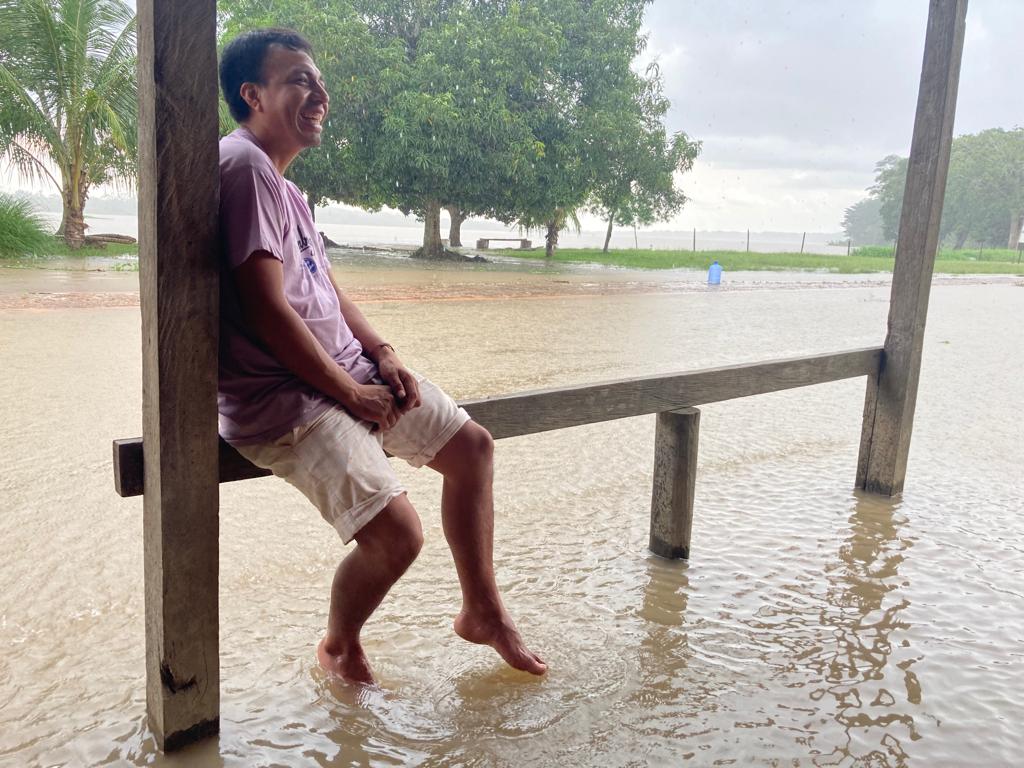
Douglas in Nueva Betania
Smoking tobacco would be part of the ceremony, they told us. They offered us some, which we declined. They lit up and took turns blowing smoke into the ayahuasca. Then they blew smoke in the air, and spat it in our faces. This continued the whole night.
At the time, I found it a bit nauseating. But I’ve since learned that tobacco plays an important role in this ceremony, and in those of other Indigenous cultures.
“Among the plants that go together with ayahuasca, tobacco is one of the most important, considered to be as sacred as ayahuasca,” wrote Leonardo Rodríguez for Chacruna. Douglas later told me that tobacco cleans the spirit and helps you discover other dimensions.
Douglas and Luis measured out a shot glass of brew for each of us. I drank first. It didn’t make me gag like some other drugs do, but it was very pungent, almost sour. I immediately washed it down with water.
And so it began. Our two shamans started singing in the Shipibo language, as the room filled with smoke. Their song was trance-like, repetitive, and in a lonesome minor key. Almost like a Gregorian chant in the middle of the jungle.
As their voices rose and fell, I switched between laying down in the fetal position, sitting, leaning back on the wall, and crossing my legs. I finally decided I would digest the medicine more easily by sitting upright. I felt very relaxed but a little chilly. Hiding under my blanket felt just right.
I saw dark shapes, ringed in light, and flashes of vivid colors.
When I went outside to urinate, as I did often, I savored stepping into the real world, under the night sky with a full moon. The village was completely asleep—no people, lights or sounds. Just the insects, frogs and bats. I heard the distant sound of the shamans singing. When I rinsed my hands in a bucket, I realized how much you can clean with so little water. I’ve tried ever since to use water more sparingly.
I began to have subtle but powerful hallucinations. I spent much time with my eyes closed. I saw dark shapes, ringed in light, and flashes of vivid colors. The room glowed with a mystic aura.
Sonia reacted a bit differently. Several times she gagged and retched in the bucket. Once, she broke out sobbing. She argued with Douglas as he placed his hands on her. He instructed her to push her abdomen with her hands to “get it out.”
“Es una técnica,” he said. “It’s a technique.”
Halfway through the ceremony, Sonia came to sit and hold me tight. Even in the dark room, I saw her glowing smile, framed by two sharp locks of hair.
Later, Sonia reflected: “I really appreciate doing it with you, because I don’t think I would have felt as safe as a woman if it was just me and Douglas and his cousin. I wanted human touch and embrace. But I didn’t want to be misinterpreted. I can’t imagine doing that experience with strangers who are maybe being a bit excessive.”
Once, Douglas took a drink from a small glass bottle… and spat all over Sonia! I jumped right out of my seat. No one else is freaking out, I thought. I should just act normal, right? Then he told me to close my eyes, and did the same to me. I later learned that the liquid was a folk remedy, a liquor with infused flowers, to help someone experiencing pain.
After hours without speaking, I chuckled.
“¿Quieres saber algo chistoso?” I said. “Want to know something funny?”
And I told them about the time my sister invited her friends’ band to play at her birthday party, and my brother, his friends and I threw potatoes at them.
“And now here I am, a musician. I hope no one throws potatoes at me!”
But somehow, knowing the shadow that clawed at me was enough to calm me.
Then my thoughts darkened. I thought about Duterte’s drug war in the Philippines, his genocide. I thought about the genocide my Russian Jewish family lived through. About the war on America’s streets, brutality against Black and African and Indigenous peoples, about the fear, hatred and violence in all of us. Where does it stem from?
Then I went back in my own life and found a house without music. My parents rarely played records. We rarely went to concerts or performances. Other than the pensive portrait of Soviet folk singer Vladimir Vysotsky in my dad’s office, there was no passing on of our music heritage—Brazilian, Latin, Jewish or Russian. Would my parents still be married if they’d had music in their lives? I promised myself to try to bring it to them.
I thought about the shadows in my life. For the first time ever, I wondered if my grandma gave herself the cancer that killed her—if all her shadows made her sick to death. I thought about my brother, who took his own life. What was eating at him?
But somehow, knowing the shadow that clawed at me was enough to calm me. I can’t suppress it, I realized—but I also don’t need to let it control me, like it did my grandma and my brother.
I shared my thoughts with the room.
We talked about what a blessing—and a burden—it is to make music. “Vale la pena,” said Douglas. “The burden is worth it.”
“My mother fought against me doing music,” I said, “She told me, You’re not Madonna! You’re not John Lennon—there was only one John Lennon, and he’s dead!”
“But she’s right,” I said. “I’m not John Lennon, and I don’t want to be!”
Our talk turned to insects. They’re unavoidable in the Amazon—ants, flies, bees, mosquitoes, roaches, crickets, grasshoppers, butterflies, moths, termites. Spiders, too.
“The ants are incredible,” I said. “If you drop a piece of food, they’ll be there in minutes to take it away. I’ve seen 10 or 15 all carrying one potato chip! It’s amazing!”
Sonia said, “But I don’t understand why we have roaches. They’re really freaky. But… I guess they eat poop. And that’s important to help matter decompose.” We all laughed.
We learned a bit from our shamans, too. We asked if it would be possible to change the name of their village to a Shipibo name, and if Douglas could formally adopt his Shipibo name, which he shared with us: Isasina.
“It’s very difficult at this point,” he cautioned.
Reflections
After about five hours, the ceremony ended. I marveled one last time at the full moon, and met Sonia inside for bed. She shared that she felt uncomfortable at times with our two shamans, because they crowded over her any time she showed weakness.
“That’s when I came over and gave you a hug,” she said, “so I could demonstrate to them what it looks like when I choose to be touched.”
“I think when I’m accessing this plant medicine, I would like to have female energy because it’s such a sacred experience,” she said later. “I don’t think men all the time can understand where I’m coming from and what I need. I experienced a lot of pain—but I didn’t necessarily want someone to come close to me and sing in my face. I also didn’t want to hide my emotions.”
It raises a sensitive issue. While our shamans never behaved inappropriately, and many people practice with integrity, there have been documented cases of sexual abuse related to ayahuasca ceremonies. There are real risks and warning signs people should be aware of; as a starting point, Chacruna has a guide with tips for staying safe.
I’ll never know how different it might have been had I taken a larger dose, or observed the Shipibo dieting practice, or done it with different shamans.
Overall I had a better time than Sonia, although we both agreed that the smoke was too much for us. Like me, she spent much of her experience in deep memory of her parents, brother and her late grandparents. She pleaded with me afterwards to visit my grandmother in Brazil—the last living grandparent in our lives.
“The plant made me think about my grandparents,” she said. “I thought a lot about my parents’ pain as immigrants, coming to a country and leaving behind their whole family and community. Not being able to go back to see their own parents, especially when they died. I felt that pain intensely, that longing and regret.”
Sonia said she returned to the day she learned her grandmother in Mexico died. It was the first time she saw her father cry. “I remember being a small child and seeing him look into my eyes, giving me all his pain because he didn’t know what to do with it. Then holding a shot of tequila and saying, This is for her.”
Then, “the image of my father became a fetus. I realized no one has bad intentions, everyone is a fetus and a child.”
“By the end,” she said, “after I’d experienced all my pain and sadness and discomfort, I felt so strong and calm and at peace with myself. I felt confident. I knew everything was going to be alright. I felt very connected to mother earth, to pachamama.”
Sonia went from being an ayahuasca skeptic before our trip to feeling so impacted by her experience that she now wishes her whole family could do it with her.
My own ayahuasca experience was incredible—but it’s only my experience, and a limited one at that. I’m eperienced with psilocybin mushrooms; ayahuasca felt familiar and safe to me, almost like I just switched from jazz to blues for a night. If anything, it felt a little smoother and easier than mushrooms.
But I took only a small amount. And the setting of my particular experience, of course, was just as significant as the drug itself. I’ll never know how different it might have been had I taken a larger dose, or observed the Shipibo dieting practice, or done it with different shamans.
Most of my mushroom experiences were in my New York apartment, surrounded by my best friends and our cats, serenaded by Black Sabbath or Chance the Rapper. Tripping in the jungle, guided by a shaman singing in Shipibo, is something I’ll remember long after I forget the drug’s effects.
Ideal would be building personal relationships with people or groups that work with ayahuasca.
I don’t claim to have much specific advice for people seeking this medicine, whose circumstances and experiences may not resemble mine. But preparing more than I did, and finding out more in advance about the ceremony, would be a good idea. Being careful, mindful and respectful of the people you’re with and the environment you’re in are all important.
“Do good research and don’t go in blind,” Ali said, cautioning that this should ideally be done before you even travel to another country. “Don’t go in as a mere consumer of a product, and instead [go] as someone who’s engaging in a very old and revered tradition that should be treated with the kind of respect for communities of people who have preserved these practices in spite of extreme opposition.”
People can read about ayahuasca retreat centers online. But Ali said it’s difficult to fully trust this information—you can’t just “Yelp” this one. Ideal would be building personal relationships with people or groups that work with ayahuasca.
The way I did it may not have been ideal, and I consider it just a starting point of my own learning. But my experience moved me profoundly and I wouldn’t change anything about it. I hope if you ever find yourself in Pucallpa, you reach out and aren’t afraid to chat with locals. Ayahuasca may or may not find you, but friendship could. And make sure that you get out on the river and under the stars.
*Name has been changed to protect privacy at source’s request.
Photographs by Sonia Erika and Douglas/Isasina.
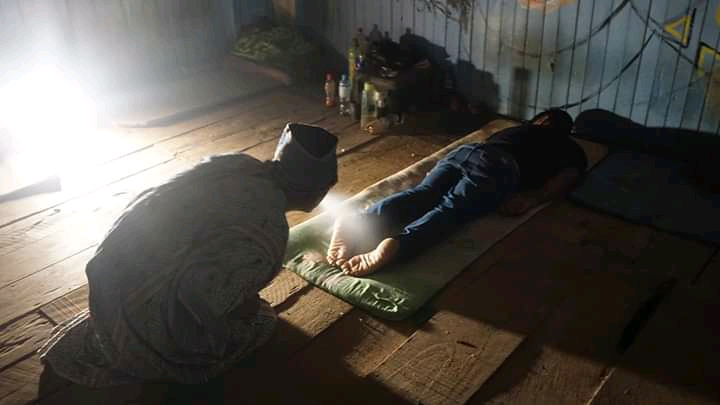

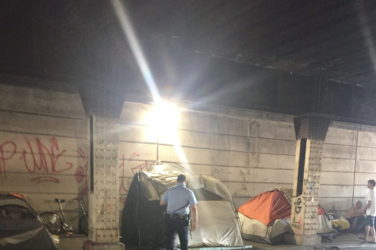


Show Comments